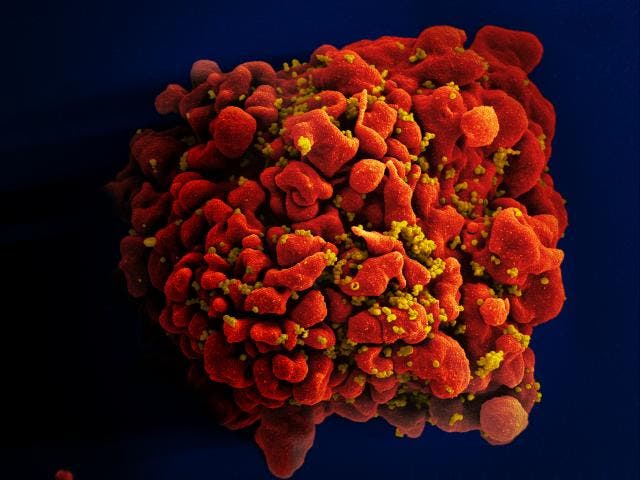A new gene-snipping enzyme was successful in removing strands of HIV genetic material in mice trials. If the enzyme can prove its reliability in human trials it might revolutionize how we fight the virus forever.
HIV is no longer the death sentence it once was.
Through modern antiretroviral therapy, the virus can be kept at bay and patients have a fighting chance against it. But antiretroviral treatments are more of a band-aid than a cure to HIV: they are expensive, increase drug resistance in patients and can lead to a host of adverse reactions. To top it all off, because the virus can stay hidden in reservoirs throughout the body, the disease can continue to progress if the treatment is discontinued.

Image credits go to flikr used NIAID
A research team from Germany thinks that they have found the answer: they have created a substance that they hope will finally allow us to create an affordable and efficient treatment for the virus. Dubbed Brec1, the enzyme can cut strands of viral DNA out of infected cells’ genetic code and preventing more of the virus from spawning.
The team successfully tested Brec1 on mice and their results make them confident that their enzyme can be used in clinical practice. If Brec1 can be adapted to cut HIV’s genetic material out of a patient’s cells and leave everything else undisturbed, the technique would allow physicians to finally produce an effective cure for the virus.
Brec1 was obtained using a genetic engineering technique known as directed evolution, which mimics the natural evolution processes of proteins. In a way, this process can be likened to animal husbandry; starting with the genetic information for a particular gene, they subjected it to iterative rounds of mutation, selected the ones closest to what they needed, and then used those to restart the cycle of mutation.
This way they ended up with an enzyme programmed to recognize and cut DNA on either side of the virus’ characteristic genetic sequences — an impressive feat, considering that HIV often mutates, making its signature hard to determine. The researchers identified a well-conserved sequence in the viral genetic make-up and tested how well the enzyme could cut out that sequence in bacteria, HIV-positive patients and mice infected with the human form of HIV.
After a few tweaks, Brec1 was successful in removing the information and then patching up the strands of genetic material after removal of the sequence. Examined 21 weeks later, cells treated with the enzyme showed no signs of HIV.
There have been previous attempts to create something similar to Brec1. Previous gene-snipping enzymes such as CRISPR or TALENS were effective in clearing out viral genetic material but didn’t result in a reliable cure — they also had a nasty habit of making accidental cuts elsewhere in the genome.
The debate around these enzymes has shown us that people aren’t all that thrilled of methods that alter our DNA. It’s what makes us what we are, and people are wary of the consequences of altering it. Antiretroviral methods, for all their shortcomings, don’t make people nearly as nervous.
But if Brec1 proves to be reliable — even better, infallible — in human trials as it was in this study, it’s likely that it will come at the forefront in our search for an HIV cure.
Though there are a few more questions that the team doesn’t have an answer to yet — like what will the enzyme do in cells infected with more than one strand of HIV — they plan to test Brec1 in humans in the near future.
The full paper, titled “Directed evolution of a recombinase that excises the provirus of most HIV-1 primary isolates with high specificity” has been published online in the journal Nature and is available here.






